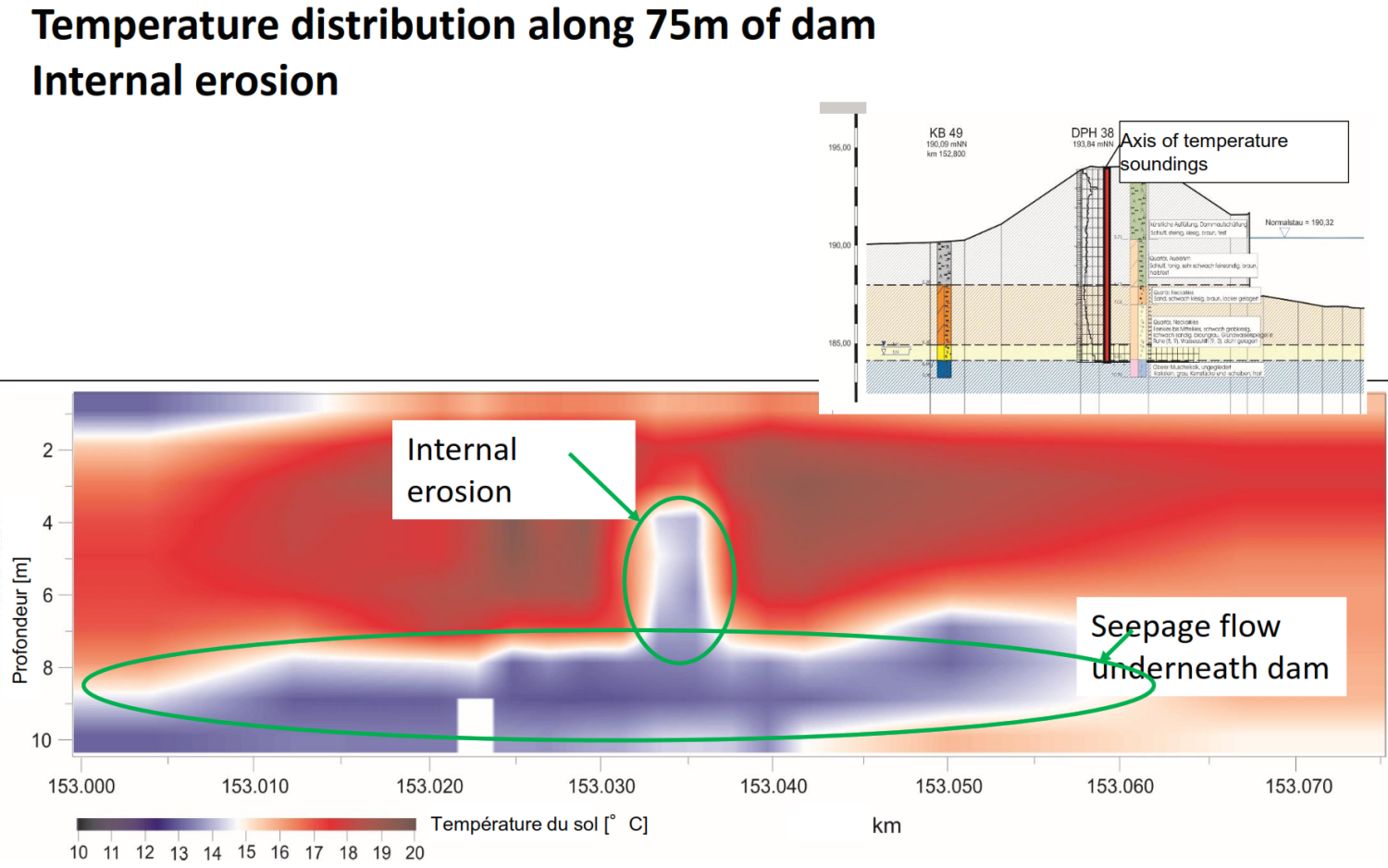
Internal erosion / suffusion
In-situ determination of pore water velocity
The critical hydrodynamic parameter for material transport by leachate - internal erosion / suffusion - is the local pore water velocity. In areas with high pore water velocity, the onset of internal erosion is most likely. Until now, the critical pore water velocity at which material transport begins was theoretically determined from the grain size distribution and the hydraulic gradient. As local heterogeneities cannot be considered, the theoretical estimation of the critical pore water velocities is most questionable.
Pore water velocities between 10-7 m/s and 10-2 m/s can be measured in-situ with the heat pulse method. Therefore, a hollow rod is driven into the ground or, during a construction or renovation measures, installed directly into the ground at a suitable location. Then, the heat source and the temperature sensors are emplaced.
It is also possible to determine the pore water velocities in-situ using the gradient method. However, this requires a temporal variation of the seepage water temperature. Similar to colour and salt tracer experiments, the "thermal tracer" breakthrough times are determined and the pore water velocities can be calulated.







